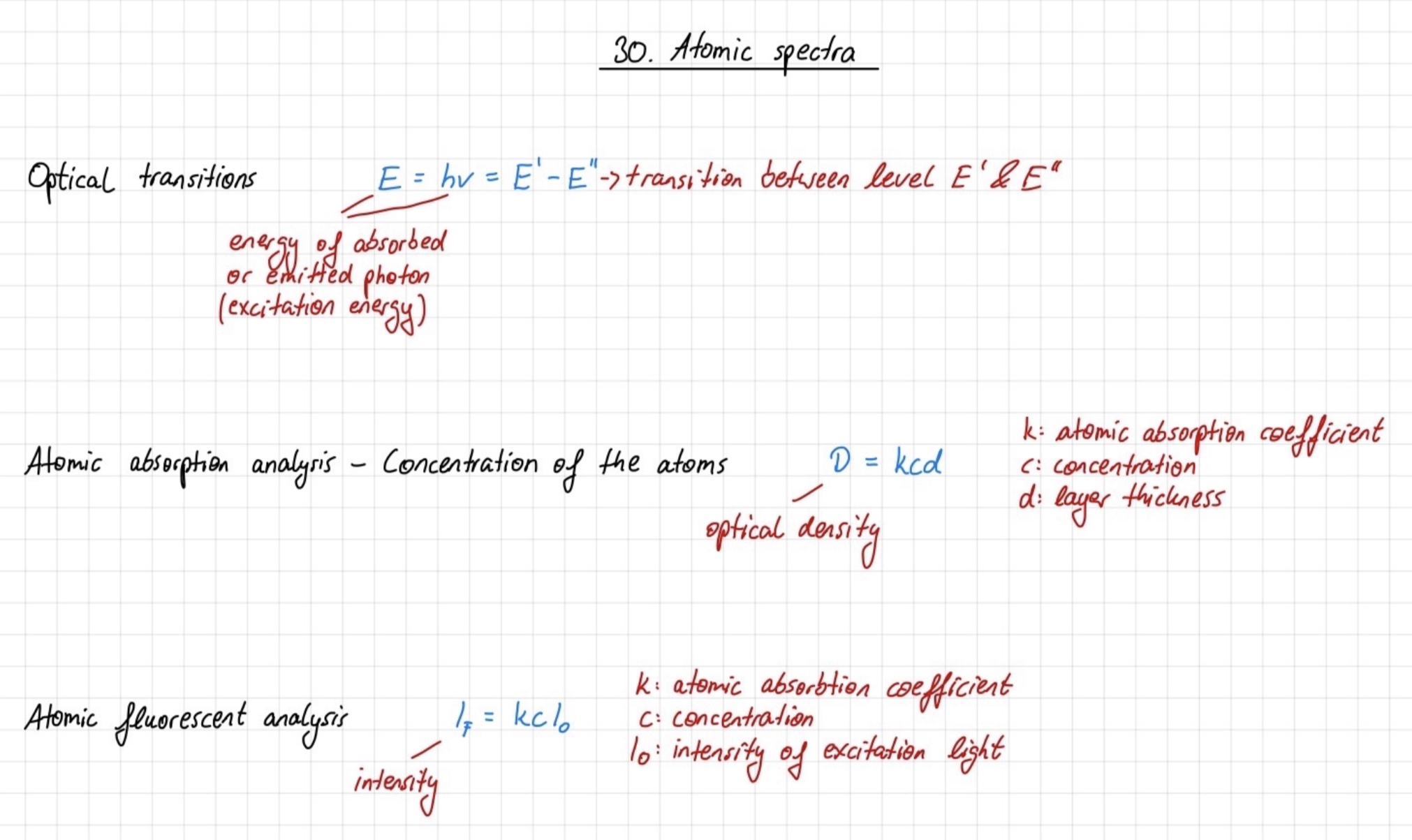30. atomic spectra
1/8
Earn XP
Description and Tags
Name | Mastery | Learn | Test | Matching | Spaced |
|---|
No study sessions yet.
9 Terms
Structure of Atoms
Atoms consist of a nucleus (protons and neutrons) surrounded by electrons in defined energy levels or shells. Electrons orbit the nucleus in discrete orbits with quantized energy levels
Atomic Energy Levels
Electrons in an atom occupy specific energy levels, each corresponding to a unique electron orbit. These levels are quantized, meaning electrons can only exist in these defined levels and not in between. Energy levels are often denoted by principal quantum numbers (n=1, 2, 3, etc.).
Pauli Exclusion Principle
No two electrons in an atom can have the same set of quantum numbers. This principle explains the unique arrangement of electrons in energy levels and sublevels, ensuring each electron occupies its own unique state.
Optical Transitions Between Energy Levels
When an electron transitions between energy levels, it absorbs or emits a photon corresponding to the energy difference between the initial and final levels. This energy is given by E = h \nu , where E is the energy difference, h is Planck’s constant, and \nu is the frequency of the photon. These transitions result in the emission or absorption spectra characteristic of each element.
atomic spectral analysis
This technique studies the interaction of electromagnetic radiation with atoms to identify elements and determine their concentrations.
Emission Analysis
Principle: When atoms are excited by heat, electrical discharge, or other energy sources, electrons move to higher energy levels. As electrons return to lower energy levels, they emit photons of specific wavelengths. Usage: The emitted light forms an emission spectrum, which is unique to each element. By analyzing these spectra, the elements in a sample can be identified.
Absorption Analysis
Principle: Atoms in the ground state can absorb photons of specific wavelengths, causing electrons to jump to higher energy levels. Usage: A light source passes through a sample, and the absorption spectrum is recorded. The wavelengths at which light is absorbed correspond to the energy differences between atomic levels, identifying the elements present.
Fluorescence Analysis
Principle: Atoms absorb photons and become excited. When electrons return to lower energy levels, they emit photons at different, often longer, wavelengths. Usage: Fluorescence spectroscopy measures the emitted light, providing information about the atomic structure and the environment around the atoms.
